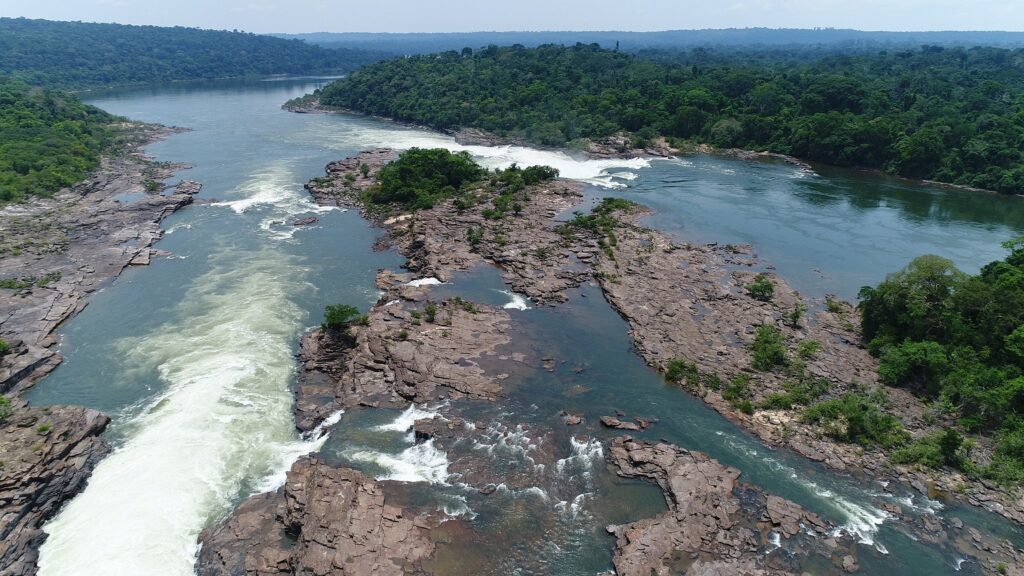Mining is a threat to indigenous peoples, and more than one-third of the rivers and on the largest river basin, MT
Process mining increase by more than 60% of the basin of the rio Juruena, and will overlap the edge of the six lands of indigenous peoples
The intensification of mining activities poses a risk to the socio-biodiversity in the basin of the Juruena river, in the state of Mato Grosso. More than one-third (34,61%) of all the rivers in the area likely to be affected by the mining activities, according to the Bulletin of the Monitoring of the Pressure and Threat of the Indigenous Lands in the Basin of the rio Juruena, which is produced by the Operation in the Amazon’s Native (OPAN), from the information supplied by the National Mining (ANM).
“This is alarming because it suggests that the quality of these water bodies may be seriously compromised by the impacts of mining activities, thus threatening the health, biodiversity, and culture of a people that rely on these rivers,” says Cristian Felipe Rodrigues Pereira, geographer, and author of the newsletter.
The analysis included 2756 bodies of water, and it was revealed that the 954 is intersectados gaps in the processes and mining, including some of the most important in the watershed, such as the rivers, Juruena, Blood, Arinos, a Parrot, and the Fish of the Cavari, and São João da Barra.

All the processes and the mining is already covers an area of 2.6 million hectares, which is larger than the whole of the state of the states (2.2 million hectares). Between 2018 and 2024, there has been a jump from 782 to 1261 process mining in which it is the largest river basin in the state of Mato Grosso, in the Juruena rivers, which is an increase of 61,25%.
Currently, on the basis of the data of ANM indicates that 19 of process mining is overlapping the edge of the six indigenous territories in Mato Grosso, brazil: out of sight (Despite that), Kapôt Nhinore (Kayapó, and the insulated Hood/Nhinore), the Kayabi (Apiaká, Kayabi, and the Munduruku), Paukalirajausu (Nambikwara), Portal, the Enchanted (Chiquitano), and Uirapuru (Paresi). The sum of the areas of process mining overlapping amounts 7.382-acre site.
“The situation is very worrying, because in these cases they are illegally overlaid on top of the lands of indigenous peoples, or because the rivers they depend on the people and communities of the Juruena rivers, are also located on the route of the mining-and can be subject to contamination. In the case of the Yanomami, and in the case of the Munduruku are examples of the powerful impact of the risk and the Juruena rivers, is the subject of” early warning Andreas Fanzeres, co-ordinator of the Rights of Indigenous peoples, the Policy on Indigenous peoples and the Information Society, and of OPAN.

Across the region, a sub-basin of the rio São João da Barra, one of the ones that make up the Juruena is the one that draws the most attention because it had a more than three-quarters of the area (75,64%) overlapping with the requirements of the processes in the mining, primarily related to the exploitation of copper, in addition to a share of the gold.
The paper highlights a high degree of concentration of the processes related to the mining of gold and copper in the middle and lower courses of the Juruena. Activities related to the gold, they cover approximately 40% of the total land area of process mining, as the cover accounts for 32%. The distribution of these resources, it follows a pattern that is characteristic of the state, of which the proportion of the requirements of the processes in the mining of gold and copper, respectively, 52% and 23% of the total. For the newsletter will only consider processes in the mining, legal, and therefore there is no information in the site is illegal, and that it points to a scenario is even more threatening.
“Is this the flood of process mining, moving so fast, it puts into question the respect for the right to be consulted in the free, prior and informed consent of indigenous peoples and traditional communities in the region. There are several layers of violations,” she warns Andreas Fanzeres, co-ordinator of the Rights of Indigenous people of OPAN.
“In addition to all of the points made, this is the process video of the debate related to the multiple uses of water resources, public health, and climate change,” adds Mr Felipe Rodrigues Pereira.
